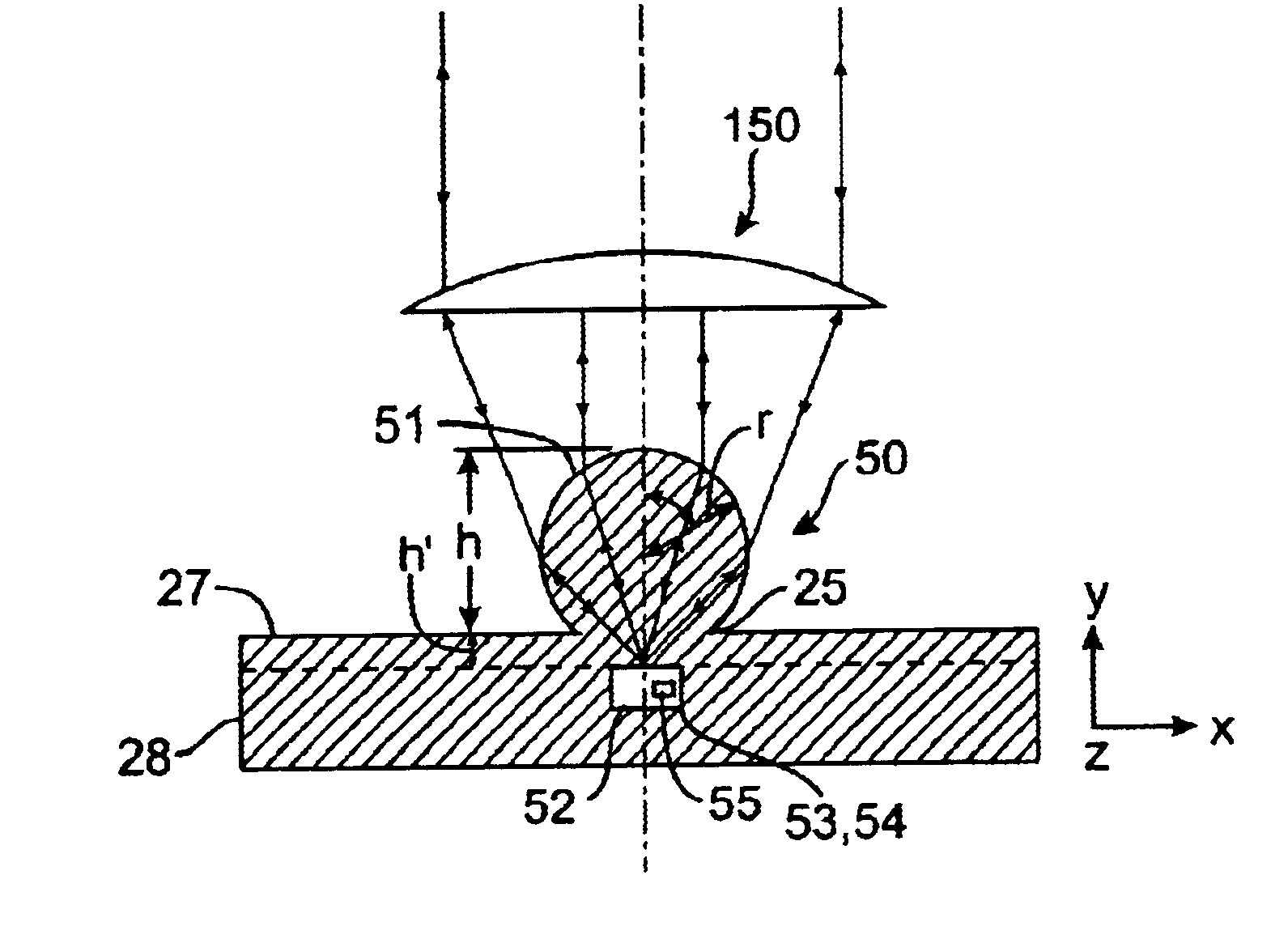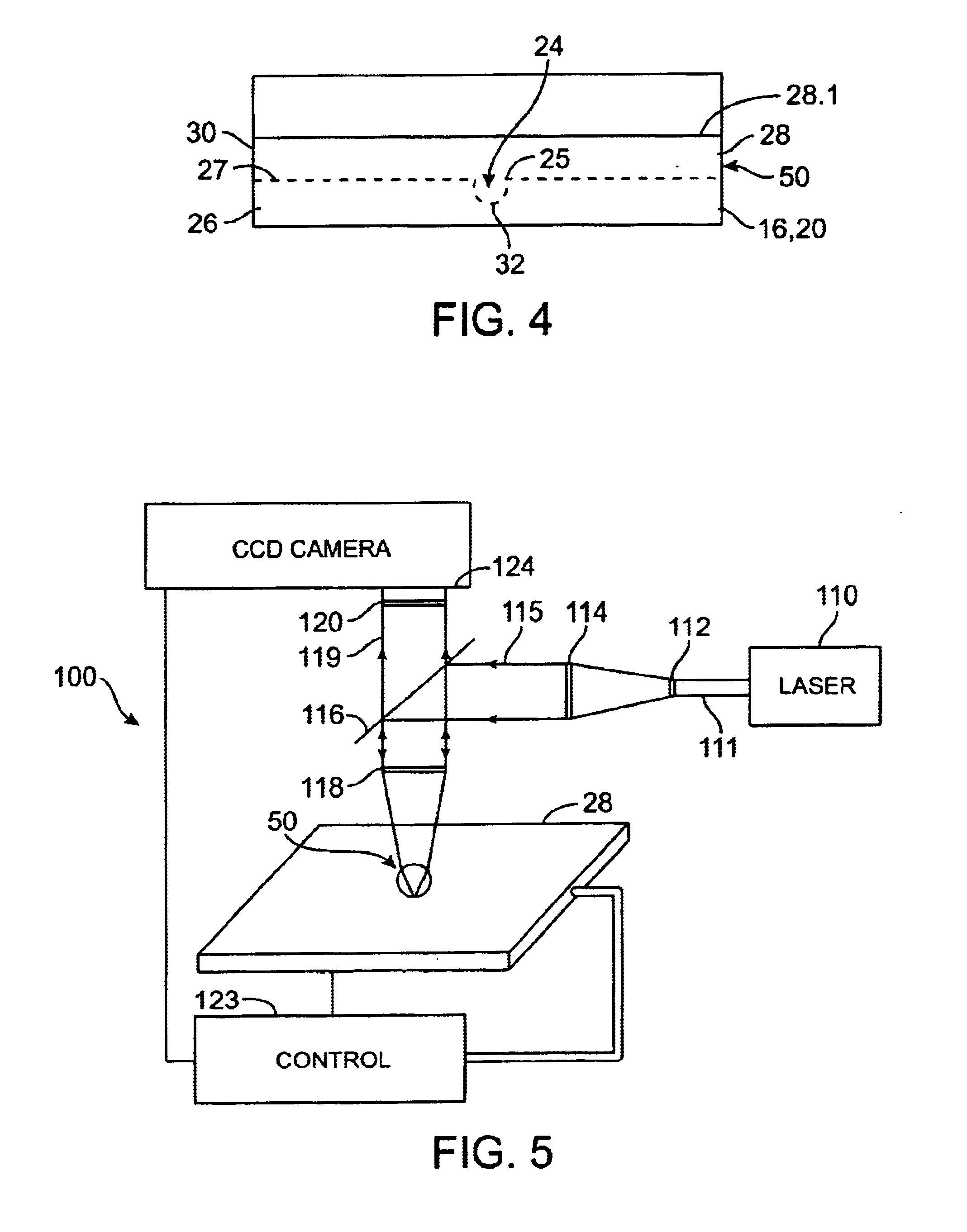Microfabricated lenses, methods of manufacture thereof, and applications therefor
a technology of microfabricated lenses and lenses, applied in the field of microfabricated lenses, can solve the problems of requiring a polishing time typically of many hours, the degree of features that can be seen on the specimen is limited, and the complexity of its manufacture, so as to improve light collection/focusing properties, improve optical properties, and reduce the cost of optical elements.
- Summary
- Abstract
- Description
- Claims
- Application Information
AI Technical Summary
Benefits of technology
Problems solved by technology
Method used
Image
Examples
example 1
To create the mold of the SIL, a 150 microns radius micro sphere (Ruby ball lenses, Edmund industrial optics) is used.
The material from which the mold is to be formed (in this case silicon) is preferably prepared a maximum of 4 hours before use, complete manufacturing takes about this amount of time so the silicon is mixed immediately before beginning. To prepare 30 grams of 10:1 silicon, mix the two components (27 grams of GE RTV 615A and 3 grams of GE RTV 615B) and use an Eyence Hybrid Mixer (mix for 1 minute and defoam for 2 minutes). If some bubbles appear when pouring RTV, it's helpful to defoam again for 1 or 2 minutes.
A 1 mm substrate is used and is cleaned by putting it on a spin coater at 1000 RPM and flushing it with acetone for 1 minute. The size of the substrate is not especially critical, but the use of a plastic dish should be avoided because it's not flat enough.
To make a first layer of RTV, pour fresh RTV on the substrate locked by a vacuum. Completely cover the subs...
example 2
To create one exemplary mold of the meniscus type lens 400, a 395-micron radius micro sphere (“bead”) is used (Ruby ball lenses, Edmund industrial optics). This size is very close to the minimum size of about 360 microns needed to cover the SIL of Example 1.
In a large petri dish, the amount of silicon needed is poured; the thickness of the layer has to be exactly about 280 microns in order to achieve the correct height using this size bead. The silicon is poured in the center of the petri dish, and then spin the petri dish at 300 RPM until the silicon meets the borders of the petri dish.
The dish is placed in an oven for a few minutes (5-6 min) before putting in the bead. It's better to treat the bead with TMCS, and then to clean it with acetone before releasing it in the middle of the petri dish. The dish is then placed in the oven at 80° C. for 45 minutes.
There is no need for a layer of cured silicon under the bead, it can lie on the bottom of the petri dish because we just use the...
example 3
By using one of the solid immersion lens structures disclosed herein, the numerical aperture (NA) of the optical system may be increased to a value that is otherwise not obtainable using conventional lenses. FIG. 54 illustrates how the NA is increased using a solid immersion lens. An optical system 1400 is illustrated and in the exemplary embodiment, the system 1400 is a fluorescent microscope arrangement. The set of filters is chosen according to the dyes used in the different experiments (blue excitation and green emission). A laser 1410 is used to create the excitation and in this instance the laser 1410 is a blue laser having a wavelength of 488 nm and a beam diameter of 1 mm. A number of companies manufacture lasers having these characteristics and one exemplary laser 1410 is a Uniphase 2214-10 SL Argon Laser. The excitation may also be created by a blue LED 1220, e.g., Luxeon Star / C.
The filter set is selected in view of the excitation wavelength (coming from the laser 1410 or ...
PUM
| Property | Measurement | Unit |
|---|---|---|
| refractive index | aaaaa | aaaaa |
| refractive index | aaaaa | aaaaa |
| surface tension | aaaaa | aaaaa |
Abstract
Description
Claims
Application Information
 Login to View More
Login to View More - R&D
- Intellectual Property
- Life Sciences
- Materials
- Tech Scout
- Unparalleled Data Quality
- Higher Quality Content
- 60% Fewer Hallucinations
Browse by: Latest US Patents, China's latest patents, Technical Efficacy Thesaurus, Application Domain, Technology Topic, Popular Technical Reports.
© 2025 PatSnap. All rights reserved.Legal|Privacy policy|Modern Slavery Act Transparency Statement|Sitemap|About US| Contact US: help@patsnap.com



